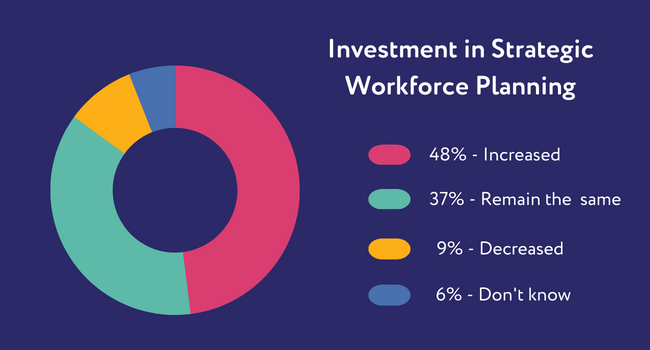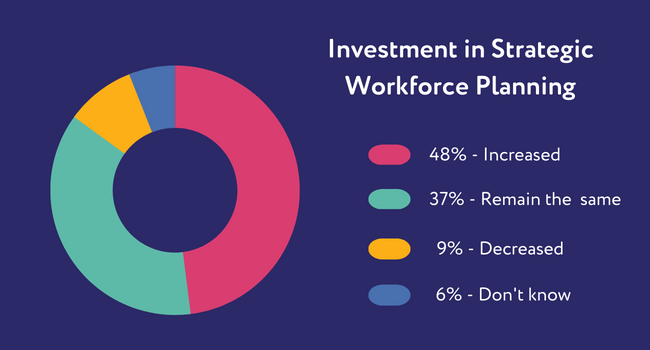The Current State Of Strategic Workforce Planning

According to a recent study commissioned by eQ8 with Aptitude Research principal Madeline Laurano, there is a growing urgency around strategic workforce planning. Senior leaders are pressuring HR professionals to create data-driven approaches to talent, and companies are prioritizing upskilling and reskilling their workforce. However, despite increased investment, most companies still take an immature approach to workforce planning.
This must change.
Strategic workforce planning is not a short-term fix. It is a long-term, data-driven approach to talent that creates greater alignment between talent and business priorities. It allows companies to be more thoughtful and less reactive in their approach to talent, providing better visibility into their workforce and a sustainable long-term strategy.
The current state of strategic workforce planning is at an inflection point. Economic uncertainty and shifts in the labor market have accelerated the interest in this crucial practice. According to our study, 85% of companies are investing the same or more in workforce planning, and nearly half of all HR leaders feel more pressure from senior leaders to address the future of work. However, only 14% of companies take a strategic, long-term approach to workforce planning initiatives.
The urgency around workforce planning is driven by several factors, including pressure from senior leaders, the priority of upskilling and reskilling the workforce, and investment in the future of work.
The pressure from senior leaders reflects that decisions around talent can no longer be reactionary, and companies need a data-driven approach to talent.
The priority of upskilling and reskilling reflects the future of workforce planning and allows companies to have better visibility into their workforce and a sustainable long-term approach. Investing in the future of work reflects that companies need insights to achieve any HR or talent transformation results.

The potential benefits of strategic workforce planning are massive, including results across all talent initiatives and business enablement from a top-line/revenue perspective, including cost savings, customer retention, and growth.
History Repeating Itself?
In 2008, for example, companies turned to strategic workforce planning in response to the recession and high unemployment. Unfortunately, most strategies failed even before they started due to a lack of resources and poor execution. Workforce planning was viewed as a tool to support layoffs rather than a strategy to support the business. In addition, companies only tracked current headcount or relied on Excel spreadsheets that needed to be regularly updated or consistently shared with key stakeholders. Companies have hit an inflection point today, and workforce planning is no longer a short-term fix.
However, most companies still perform workforce planning processes on an "as-needed" basis and focus solely on current headcount, failing to help business leaders plan for the skills and core competencies needed for the future.
A skills-based approach to workforce planning is the future, allowing companies to scale and make workforce planning more consistent across the organization. Only 18% of companies currently have a skills-based approach to workforce planning, indicating a significant opportunity to align talent and business priorities better.
Strategic workforce planning is not optional, and companies looking to thrive over the next year must consistently provide insights and data to address current and future talent needs. The time has come to shift from a reactive to a proactive approach to talent, and this shift will pay dividends in Talent Acquisition, talent development, contingent workforce management, and business enablement. It is time to invest in the future of work.
Businesses need to rethink how they approach strategic workforce planning. This is not just a tool to support layoffs but a strategy to support the business. By investing in a data-driven, long-term approach to talent, companies can stay prepared and ready to respond to any changes in the business.
Read more about the data within this post in our survey report: Unlocking the Power of Strategic Workforce Planning.
Contact us today to set up a demo of our strategic workforce planning solution and take the first step toward a more proactive, data-driven approach to talent.
